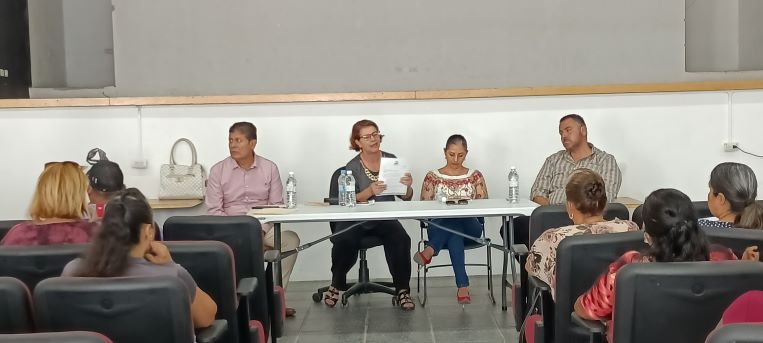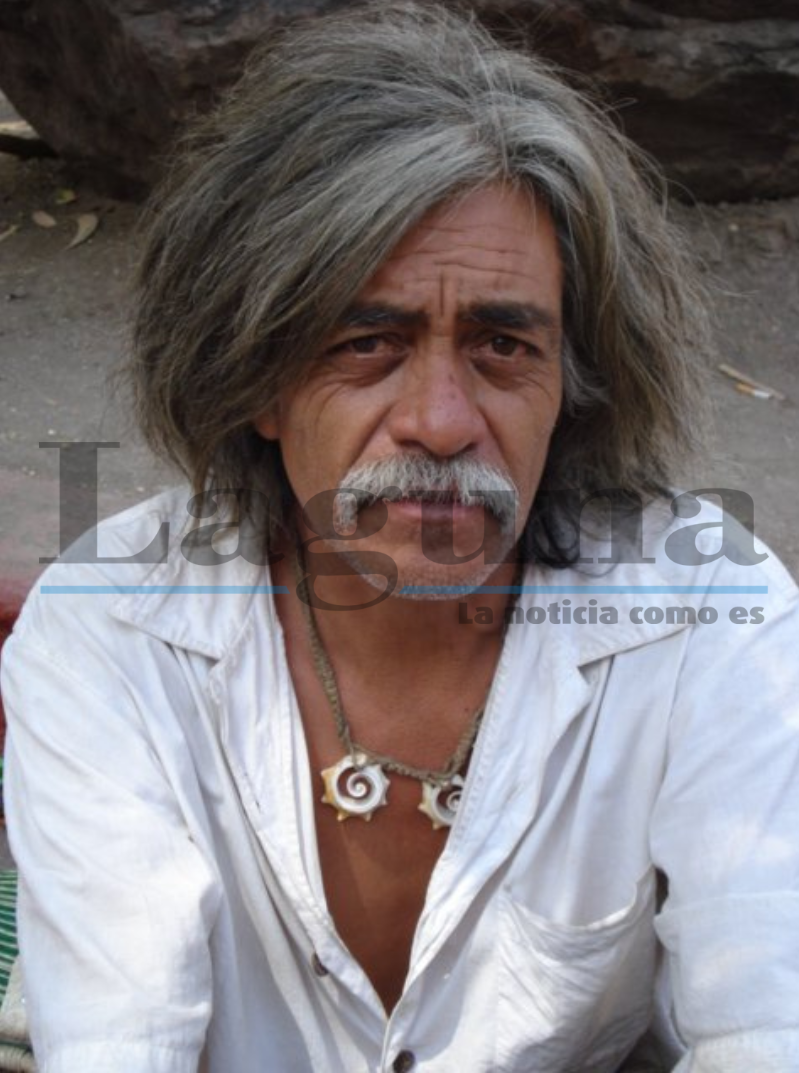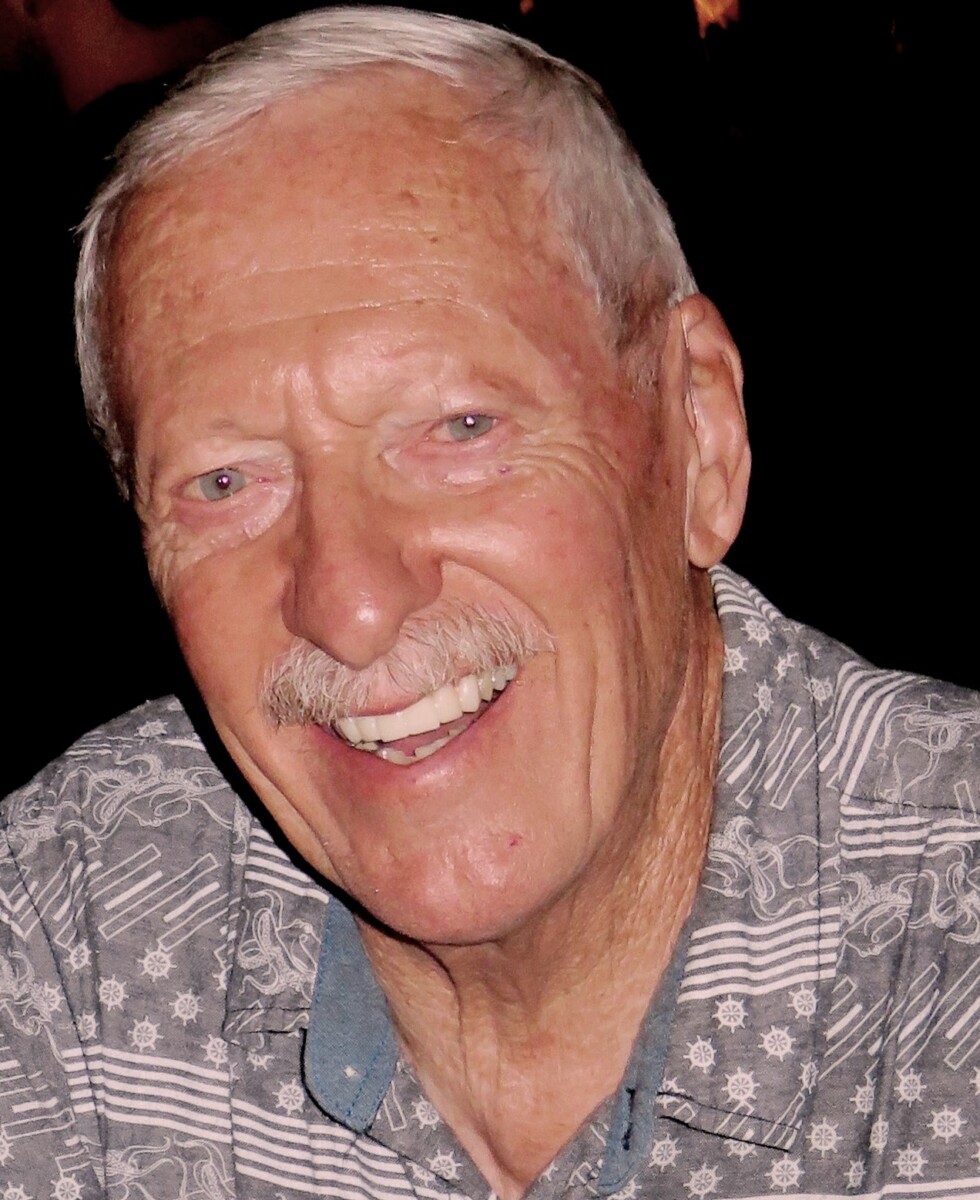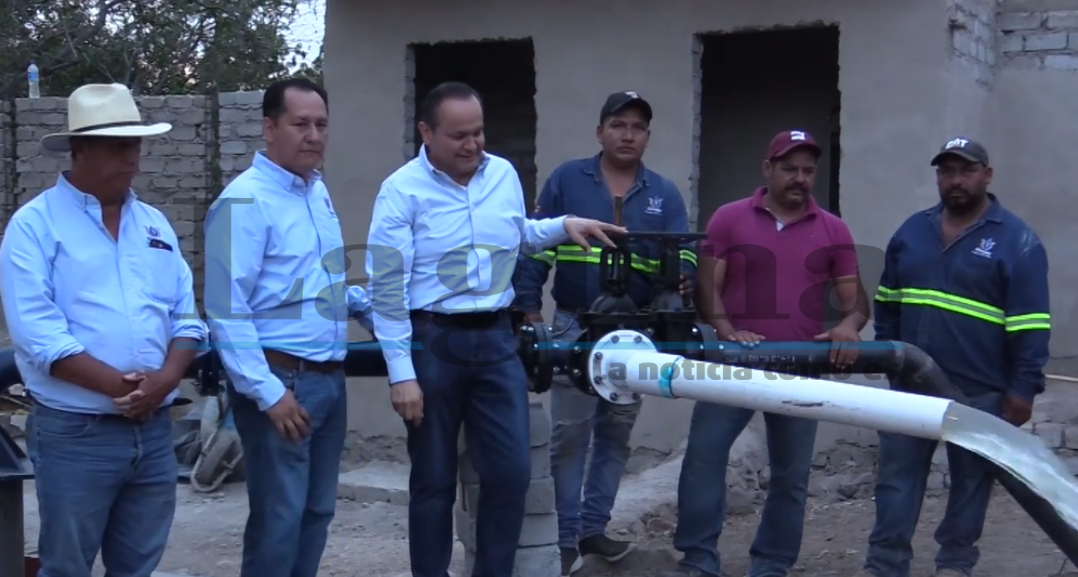noticias
Jocotepec expects a larger federal budget
José Miguel Gómez López during the last Popular Consultation of the Fiscal Pact on November 27 and 28, 2021. Photo: Archive.
Editorial Staff.- José Miguel Gómez López, the municipal president of Jocotepec, said he supports the revision of the Fiscal Coordination Agreement for Jalisco sent by the Jalisco Executive and approved by the State Congress. He said the municipality contributes much more than it receives.
Gómez López said of all the taxes Jocotepec contributes to the federation each year, only 15 million pesos are returned to the public budget. Jocotepec has 195 million pesos in expenses per year (almost US$10 million).
He also said that Jocotepec is one of the municipalities most affected by the current fiscal pact. With more than 200,000 hectares producing berries, among other economic activities that “generate an extraordinary amount of resources,” the amount returned to the municipality is irregular.
Gómez López said that by “refusing to sign” the Fiscal Pact agreement the worst scenario would be a budget cut and “we would still be better off.”
Jalisco is not seeking to withdraw from the Fiscal Pact but to establish a new distribution scheme for taxes generated in the states. This is based on the size of the resources that each entity contributes to the national economy according to its economic strength, needs and current challenges. The Government of Jalisco has a new and balanced vision of what should be fairly distributed to each state.
At the end of last year, a referendum was held in the state regarding a revision of the Fiscal Pact, but it did not have the required minimum participation to become binding. The southeast region had only 25.40 percent of citizen participation, while 33 percent was needed.
Translated by Mary Woods
Jocotepec approves payment to CFE, but will ask for reimbursement
Section of the Jocotepec – Chapala bike path, which has had irregular lighting service. Photo: Courtesy.
Héctor Ruiz Mejía (Jocotepec).- The Jocotepec town council approved the payment of a debt to the Federal Electricity Commission (CFE) in the amount of 114,000 pesos. However, they will seek reimbursement, arguing that the balance was due to technical details of the Secretariat of Infrastructure and Public Works of Jalisco (SIOP) in the installation of lights in the bike path.
The payment for the use of electric energy was unanimously approved, and the payment will be made in ten monthly installments of 11,401.20 pesos, however, the town council will seek the legal means to appeal the charge and seek a refund of the payment.
During the fourteenth session of the town council of the Government of Jocotepec, it was informed that the municipality has a debt of 114,012 pesos, generated during the period from January 21 to November 21, 2021.
The municipal trustee, Carlos Alberto Zúñiga Chacón, advised that the debt was generated due to irregularities and inconsistencies during the works of the bicycle lane by the Secretariat of Infrastructure and Public Works of Jalisco.
According to the trustee, the amount was the result of the study of the expenditure of the whole area in kilowatts, which resulted in 2,600 during the period, which represented a fee to the municipality of .05 under the concept of public lighting services.
The irregular monthly expense of approximately ten thousand pesos was due to the fact that the SIOP personnel, during their work on the bicycle path, left the electric service connected to the lights while the necessary technical operations were being installed.
«These were irregular works that now we had to resolve, but we will look for the way to legally request the refund of the undue payment», assured the municipal trustee Zúñiga Chacón during the session.
Translated by Christalle Dalsted
New Director of Human Rights in Chapala: “The culture of respect is being lost”
Carlos Miguel Real Navarro, new municipal director of the Human Rights Commission in Chapala.
Jazmín Stengel (Chapala).- The new municipal director of the Human Rights Commission (CDH) in Chapala, Carlos Miguel Real Navarro, expressed concern that «the culture of respect is being lost,» in an exclusive interview with Semanario Laguna.
Since his appointment, which took place on May 26, the lawyer with a master’s degree in Constitutional Law and Amparo ( people’s right to have access to the courts) has observed countless violations of the human rights of the inhabitants of Chapala and its delegations.
Real Navarro believes that education is the basis of everything, and that respect and self-respect must be recognized in order not to harm or cause harm to our human rights. That is why the 29-year-old will focus on education while addressing the present problems.
Among the faults he can point out are complaints about Public Safety, mostly issued during the 2018-2021 administration, where abuses of power and conflicts between hierarchies within the same department were mentioned, as well as from municipal and state officials towards the community. The lack of response to reports of serious crimes and lack of agility in the search for missing persons are other examples.
That is why Real Navarro wishes to use his knowledge to defend his people. «I am a citizen more than anything else. I like to help and solve people’s problems,» said the official.
Real Navarro has started to manage the first support required by the National Institute for Adult Education (INEA) and the Colegio de Bachilleres del Estado de Jalisco (Cobaej) so that citizens who no longer have access to the primary school system can acquire literacy skills, complete secondary or preparatory education as well as receive workforce training.
He noticed that minors stop attending school at an early age, so Real Navarro will join the prevention programs managed by the Women’s Institute, Ciudad Niñez (Childhood Legal Services) and the Dif de Chapala (Social Assistance Program). One such program is the Barrios de Paz (Neighborhoods of Peace) program which includes ways to reinforce and strengthen the institutional capacities of the municipality.
The newly appointed director is aware of the legal situations of the 39 boys and girls of the municipality who are in foster homes. Some of the minors removed from their families between 2018 and 2021 had inconsistencies in the legal process.
In certain cases, the minors were attending school and were being cared for by their grandparents or close relatives. The government decided to remove them without an investigation. The legal process began after they were already in shelters, said Real Navarro. This is a clear violation of the minors’ human rights by the municipal and state authorities at the time.
Real Navarro promised to make sure that the authorities respect their work as public servants. When a public servant receives complaints that show that he does not perform his duties or ignores those duties the municipal General Secretary and Mayor Alejandro de Jesús Aguirre Curiel can remove the person from his position as a municipal official.
Real Navarro is a native of Chapala. He has dedicated his life to defending the rights of the people as an activist from his private office, in the companies he has worked for, and now as a public official. In addition, he hopes to be named president of the ECOFAM (Esfuerzo y Comisión por las Familias) association this year.
Translated by Nita Rudy
Underground electrical installation proposed for the Chapala boardwalk commercial area
Merchants and public officials during the project presentation May 31.
Jazmín Stengel (Chapala). After some electrical fires in boardwalk commercial stalls, the City Council is looking to put the electrical lines underground. Additionally, they will reorganize the registration and permits of the stallholders.
The coordinator of Economic Development in Chapala, María de la Luz Mendoza Huerta, the director of Regulations, Sergio Armando Real Serrano, and the chief of staff, Joaquín Huerta Barrios, presented a document based on safety reports from the Federal Electricity Commission (CFE) and the Municipal Fire Department and Civil Protection.
Without legal representatives or CFE engineers present to explain the technical reasons, María de la Luz Mendoza only showed a couple of photographs as evidence of the report sent by the federal agency to the municipality after the fire on May 6, caused by an electrical overload in one of the commercial premises.

Central corridor of the commercial area of the Chapala boardwalk.
The safety report issued by the CFE urged the municipality to fix the electrical installation within a week, or the service would be cut off. The Municipality negotiated to have more time to carry out the work and to establish a dialogue with the merchants in the area.
The CFE’s recommendation dictates that the wiring of the electrical installations must be hidden and compliant. The Government of Chapala proposed that the merchants and the CFE-approved electrical engineers coordinate the work; the authorized engineer will evaluate the situation and the materials necessary to reinstall the upgraded electrical system and advise the merchants.
It is expected that the installation of the new power lines will be underground. Although the budget for the work has not been disclosed, the material will be paid for by the tenants, while City Hall will provide the labor from the Public Works Department.
The merchants asked for the area to be kept under surveillance since there have been robberies, even «they have stolen the cables from my shop», said one merchant present. In response, the reactivation of the small security booth located on the Chapala boardwalk was added to the proposals.
A letter of commitment will also be signed with the person in charge of the meter centers to avoid theft of electricity among neighbors. Many of the current connections are clandestine.
The director of Regulations, Sergio Real, said that while collecting electrical installation documents from the tenants, he will also update the merchant registration lists.
The goal is for all the merchants to have current permits, although the official did not specify exactly when. It is estimated that more than 300 vendors use the commercial area. The first registry from 2006 has only 132 merchants, plus a large number of street vendors, and more than 100 were granted permits during the 2018-2021 administration, many others work clandestinely.
Translated by Paul Weeks
Tras las rejas. Vinculan a proceso al sujeto que asesinó a niña de tres años en Tizapán el Alto
El pasado 3 de junio Jaime G. fue detenido por disparar contra de la menor y su padre. Foto: Fiscalía.
Redacción.- Como resultado de la imputación que realizó la Fiscalía Especial Regional del Distrito V contra Jaime G., quien presuntamente asesinó a balazos a una niña de 3 años de edad porque le molestó el ruido que hacía cuando jugaba afuera de su casa en Tizapán el Alto, además de que también intentó privar de la vida a su padre quien acudió a defenderla, fue vinculado a proceso al existir suficientes datos de prueba en su contra.
Mediante un boletín de prensa, la Fiscalía explicó que el Ministerio Público (MP) se opuso a la prisión domiciliaria que solicitaba la defensa del imputado y acreditó la peligrosidad que éste representa para la víctima sobreviviente y habitantes de la zona donde ocurrieron los hechos, por lo que solicitó al Juez de Control que le fuera negada dicha medida.
La autoridad judicial estudió el caso y estimó que la petición del MP era fundada y le dio la razón, por ello lo vinculó a proceso por los delitos de homicidio calificado en agravio de la menor y homicidio calificado en grado de tentativa en perjuicio del progenitor, y determinó que permanecerá un año en prisión preventiva en el interior del reclusorio.
Los hechos ocurrieron el pasado 3 de junio, en el exterior del domicilio de Jaime G, ubicado en la calle Lauro Caloca al cruce con Francisco Dávalos Flores, en el Ejido Modelo de la colonia San Gabriel, en Tizapán El Alto, donde jugaba la niña.
Según el reporte policial, el imputado salió molesto por el ruido que hacía la menor y debido a que se oponía a que ahí se divirtiera, le disparó en la cabeza con un arma de fuego que portaba, por lo que su progenitor fue en su ayuda, registrándose un forcejeo entre ambos.
Resultado de ello es que el papá de la niña fue herido en la región occipital y hombro derecho por Jaime G., quien también quedó lesionado en el tórax, por lo que éste último se refugió en su domicilio.
Debido a que los hechos fueron reportados, arribaron elementos de la Policía del Estado quienes ante el riesgo inminente en el que se encontraban las personas, lograron la captura del agresor en el patio de su vivienda, asegurándole un arma de fuego calibre 9 milímetros.
La menor y su progenitor fueron trasladados a recibir atención médica a un hospital del municipio de Tizapán El Alto, sin embargo, ella falleció, mientras que el hombre se encuentra convaleciente.
Por su parte, Jaime G. también recibe atención médica bajo custodia policial y una vez que sea dado de alta será trasladado al reclusorio correspondiente, para que enfrente su proceso conforme lo establecido por el Juez de Control.
Suma Jalisco 29 casos y un fallecimiento por influenza en lo que va de la temporada
Hasta el 11 de junio, la SSJ reportó 29 casos acumulados de influenza, cuyo tipo predominante es el AH3N2. Foto: Internet.
Redacción.- La Secretaría de Salud Jalisco (SSJ) reportó hasta el 11 de junio 29 casos acumulados de influenza en lo que va de la actual temporada interestacional 2022, en la cual el virus circulante que más predomina es el tipo AH3N2; un comportamiento que se está registrando en el país.
Del total de contagios acumulados, en la semana número 23 de 2022 se reportaron 18 casos nuevos de influenza y una defunción en Jalisco, la cual es la primera que se notifica este año y corresponde a un masculino de 79 años de edad, residente de Guadalajara. El paciente no estaba vacunado y como antecedente de riesgo reportaba otras enfermedades (diabetes, hipertensión, obesidad, tabaquismo).
Los municipios con mayor número de casos son Zapopan (11), Guadalajara (6), Colotlán (2), Tamazula (2) y Tlaquepaque (2), que representan el 79% del total.
La temporada de influenza interestacional comprende de la semana epidemiológica 21 a la semana 39 de este año. Y, aunque en esta época baja la incidencia de casos respecto a la temporada invernal, la dependencia recordó que los virus continúan circulando, por lo que ante síntomas respiratorios recomienda acudir a atención médica, para recibir un diagnóstico adecuado y atención oportuna.
La SSJ informó que durante la campaña invernal 2021-2022 en Jalisco se hicieron estrategias para la prevención de la enfermedad a través de estrategias para la aplicación de la vacuna contra influenza y reforzar medidas preventivas, como ejemplo se invitó a seguir la Ruta de la Vacuna, en medio de la contingencia por COVID-19, que consistió en asistir a los centros de salud, hospitales y centros médicos con protocolos para reducir el riesgo de contagios; en los Módulos y Macromódulos de vacunación contra COVID-19 se aplicó vacuna contra Influenza también priorizando grupos vulnerables.
De esta manera, en dicha temporada 2021-2022 fueron aplicadas 2 millones 217 mil 944 dosis de vacuna contra influenza, con un logro del 100% con respecto a la meta de la vacuna distribuida por la federación para Jalisco. Vacunarse es una medida preventiva eficaz para los grupos de riesgo.
A nivel nacional, en la temporada de influenza interestacional, al corte de la semana 23, se han registrado un total de 152 casos.
La SSJ llama a seguir las medidas preventivas para favorecer la prevención de enfermedades respiratorias como la Influenza, con base a las siguientes recomendaciones:
- La forma más eficaz de prevenir la Influenza es la vacunación.
- Lavarse las manos frecuentemente y secárselas bien.
- Mantener una buena higiene respiratoria, cubriéndose la boca y la nariz al toser o estornudar (con ángulo del codo o con pañuelos y desecharlos correctamente).
- Evitar el contacto con personas enfermas.
- Evitar tocarse los ojos, la nariz y la boca.
- Evitar cambios bruscos de temperatura.
- Ingerir alimentos ricos en vitaminas A y C.
- Aislarse rápidamente en caso de malestar, fiebre u otros síntomas gripales.
Tras emboscada, asesinan al Comisario de Tizapán el Alto y hieren a dos policías
El vehículo oficial en el que viajaban los elementos recibió múltiples impactos de bala. Foto: Twitter.
Redacción.- La Fiscalía Estatal de Jalisco (FE) inició una carpeta de investigación tras los hechos violentos registrados en el municipio de Tizapán El Alto, sobre la carretera a Tuxcueca.
De manera preliminar, la FE informó que en el lugar referido se presentó un enfrentamiento entre elementos de la Comisaria de Seguridad Pública de Tizapán y personas civiles, quienes iban abordo de tres vehículos, entre estos una camioneta modelo RAM, en color blanca; otra en color negro así como una Toyota Hilux, los tres vehículos con códigos luminosos.
Hasta este momento se informa del deceso de una persona, al parecer el Comisario de la corporación y dos elementos municipales más lesionados por proyectil de arma de fuego.
Personal de la Fiscalía se encuentra en el sitio para realizar el trabajo correspondiente como el levantamiento de los indicios los cuales se integrarán a la carpeta de investigación.
Ajijic’s friend, shaman, artist, teacher and tyrant, Katuza, is fondly remembered
Jesús María Higuera Hernández, born on March 1, 1951, passed away at the age of 71 on May 22, 2022. Photo: Facebook.
Sofía Medeles (Ajijic).- Beloved Ajijic personality Jesús María Higuera Hernández, known as Katuza, was recognized worldwide, not only for his artistic skill, but for being a spiritual master and revolutionary man every day of his life.
Born on March 1, 1951, he grew up in Ajijic in a family originally from the town. Later he would travel to Canada to start a restaurant. After a few years abroad, he decided to return to his hometown after succumbing to excessive drinking.

Katuza, pictured performing a ritual in Porter’s music video «Palapa». Photo: YouTube.
Upon his return, according to one of his closest friends, Daniel Palma, he continued excessive drinking, until he had a scare that made him forswear alcohol. After this, he became interested in the Huichol culture and their pilgrimage of «La Cruz». Joining them he learned about dance, healing, spiritual rituals and temazcal (sweat lodge), and received the title of marakame (one who merges art and culture) by the Wixárika community.
One of the skills for which he was most recognized was the temazcal, an ancestral healing ritual connected to the sweat lodge. One of his students, Luis Ríos, shared that with his apprentices, Katuza was always very firm, with a strong and sincere character, which surprised many, and alienated many others.
«He handled the traditional Mexican temazcal with burnt brick, mud and his own hands. He fought so much that he lost the sense of the temazcal. It moves with love and with love people are healed. The temazcal goes deeper, cleanses your being, your soul, and returns the essence of why we are alive, that’s how he taught me,» Luis said.
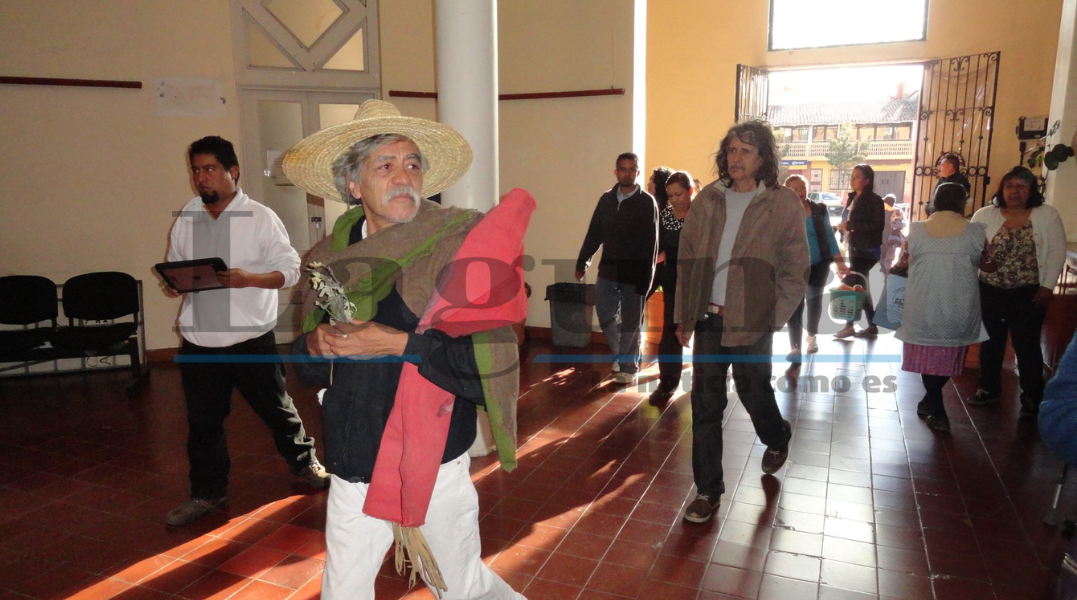
Katuza during a cleansing he performed at the Municipal Government Palace, in 2016. Photo: Facebook.
He performed dozens of temazcals not only in Chapala, but also throughout México and even Europe. National and international people became interested in him because of his rituals. Several of his acquaintances said that he was always traveling to continue learning and cultivating his skills, which is why he was portrayed in articles in media around the world, such as the New York Times.
«Once, some friends of mine were looking for this kind of healing. I took them to Katuza because he did what they were looking for. After they left, they told me that, in healing them, he was very specific with each one, ridding them of what ailed them, without having to mention it to them. They were very surprised, that’s why they recognized him as the medicine man,» Daniel Palma shared.
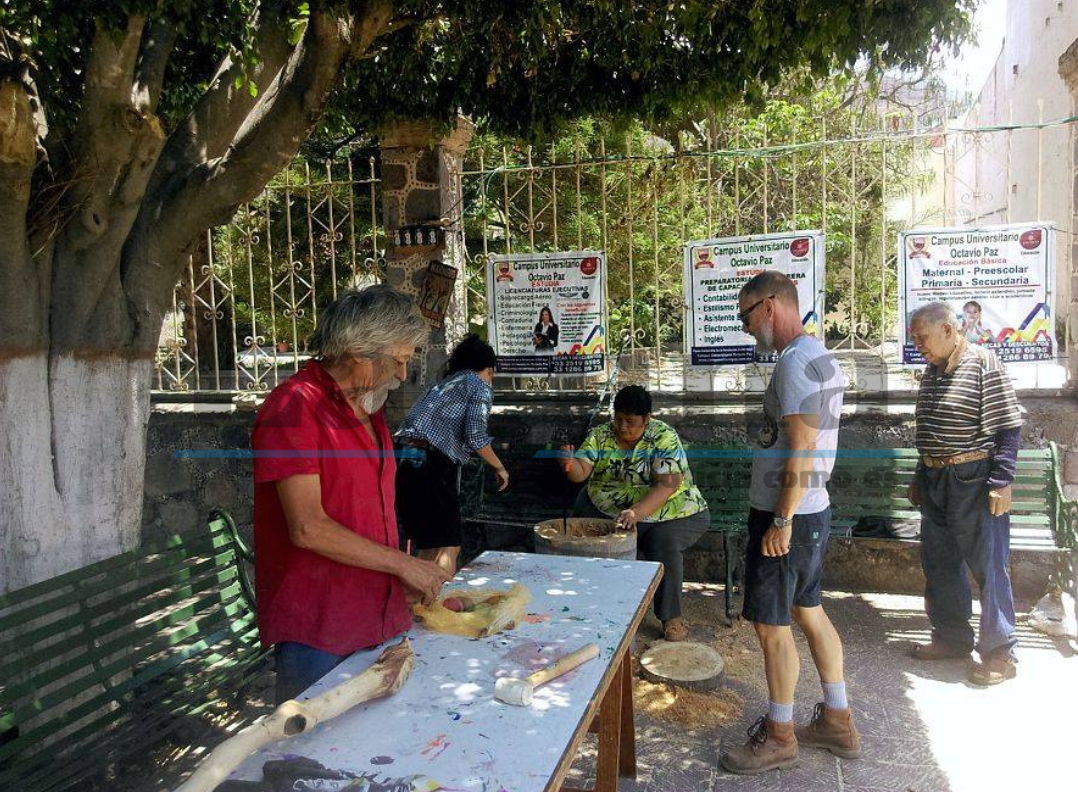
One of his wood and leather drum courses in the main square of Ajijic. Photo: Facebook.
As for his artistic side, his friend and colleague Daniel said that he handled wood and stone in a very rustic way, and his main creations portrayed lizards and iguanas.
Jesús María passed away last Sunday, May 22, at the age of 71. Many of his friends and acquaintances bid him farewell with a mass and small rituals.
He was a man who is a legend of the people Ajijic who is described with multiple titles: shaman, teacher, friend, artist, tyrant, and who inspired dozens of writings, songs, and videos that captured his eccentric life. One of those is a fragment of the song “Pájaro Rojo”, by Erick de Jesús Ocelotl:
Bajando luces de otros tiempos
Between the moon and the cold
Goes a marakame marking dreams
And the whispers of a child
[…]
Because you
You paint wings to my senses
And I
Smiling at your madness I tell you
[…]
Katuza is on an uncertain journey
Red bird red bird friend
Don’t forget what I say
Translated by Patrick O’Heffernan


Looking at Life in Lakeside
By Patrick O’Heffernan
A Tapatio Mexican driver won the Monaco Grand Prix this week, the world cup of Formula 1 auto racing and to many the most difficult of auto racing’s unofficial Triple Crown. He is the first Mexican to win the Monaco Grand Prix, and the first North American to win it since 1981.
Now, you may not be excited about auto racing. I understand, although I am, having raced H-class Sprites in another lifetime. Formula l racing (the funny-looking really fast cars) is a rich person’s sport, sort of like yacht racing, only louder and more dangerous for both drivers and spectators. But this one is a win for the home team here is Jalisco as well as Mexico..
Mexico is justifiably proud that one of its sons topped the podium at Monaco, Sergio “Checo” Pérez, racing for the Red Bull team. This is Pérez ‘s third Grand Prix success, the first being winning the 2021 Azerbaijan Grand Prix, and the second a pole position in the Saudi Arabia Grand Prix earlier this year.
Pérez ‘s win was based on strategy, as well as speed. A rainstorm on the track and a late race accident that took out a barrier forced the drivers and their crews to make multiple decisions on which tires to run on for the final laps and when to change them – a major set of strategic choices. Pérez and his crew got the strategy right; the other three top finishers did not
As a result Pérez was able to hold the lead to the checkered flag and cinch his third success in Formula One, finishing just over a second ahead of second place Carlos Sainz of Spain. The 32-year old was rewarded with lots of champagne in very big bottles, kisses from every woman within reach, a gold trophy in the shape of the track in a special Luis Vuitton case, and an $8 million contract renewal with Red Bull. Plus, the undying pride of his countrymen and women.
Why should Mexico be so proud that one of its own has won the top Formula 1 race in the world – or any F-1 race for that matter? Well, for starters, F-1 is arguably the most competitive sport in the world. There are 9 billion people on earth and only 20 Formula 1 seats available. That makes driving F-1 a more exclusive club than the US Senate, and Pérez has made Mexico a Member.
Secondly, unlike NASCAR where everyone is essentially driving the same car because of NASCAR rules, F-1 cars can be and are designed to be the fastest in the world. The engines generate 1,000 HP and rev at 15,000 RPMs, moving them at speeds of up to 240 mph (NASCAR tops out at 212 mph). There are different cars for different tracks, with the length and stiffness of the frame, the center gravity, the engines (four companies supply F-1 engines), and other components differing vastly from car to car and track to track.
In short, racing Formula – and winning – is a unique combination of a skilled driver willing to risk his or her life in every race, the pinnacle of auto design and technology, money, and strategy. Racing and winning a Formula 1 race puts Mexico in the most exclusive club in the world. Whether or not you follow auto racing, it is another reason to be proud of the country we live in. It can do big things.

After a year and a half, the water well in the west of Ajijic is finally working!
Municipal President and SIMAPA officials during the announcement that the well would be connected to the potable water network. Photo: Government of Chapala.
Sofía Medeles (Ajijic).- The well on the outskirts of Ajijic was put into operation at the end of last week, after approximately a year and a half of drilling, and will supply the areas from La Cristina to Alceseca, to the west of the town.
The person in charge of the Municipal System of Potable Water and Sewage (SIMAPA) Ajijic, Timoteo Aldana Pérez, said that although it does not have the expected capacity, the water is suitable for consumption and sufficient to cover the needs of the area.
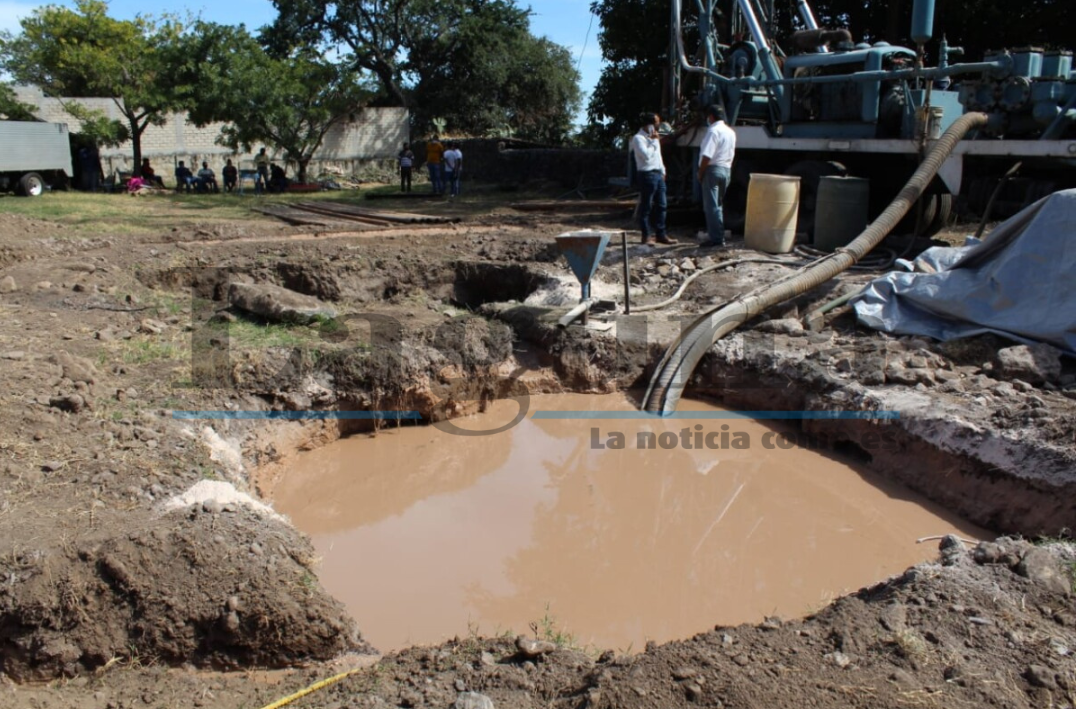
The wells shortly after being drilled in 2020. The well is located in the area of La Mojonera and will supply water from La Cristina to Alceseca. Photo: Sofía Medeles.
«The well produces less water than we expected. Normally the capacity of the other wells ranges from 33 to 16 liters per second, but this one gives between eight and ten. It is not what we expected, but it is enough water for the area. We hope that with the rainy season it can improve,» said Aldana Pérez.
He also said that the low capacity of the well could be due to the fact that the bentonite -material used to avoid or reduce landslides in the wells- that was used during its drilling has not yet been completely cleaned. «It’s a matter of waiting to get it all out,» he mentioned.
He added that this well is the deepest of all the wells in Ajijic and the drilling expenses were assumed by the past administration. This administration was in charge of the electrification and the placement of the pumping system, and although he does not know the total cost of the well, he commented that he estimates it could be approximately three million pesos.
Neighbors of the zone said that the operation of the new well is already noticeable.
«Yes, there has been water for more days, although not all day. Before there was water two or three days a week, and now up to six days,» commented José Rosario, who lives in the Alceseca area.
On the other hand, one of the interviewees, an inhabitant of La Cristina, to the west of Ajijic, commented that she has noticed the change, however, the water has been more cloudy with a whitish color.
The well is located in «Rancho San Vicente», on the municipality’s borders. This was announced by the last administration (2018-2021), where the then municipal president Moisés Alejandro Anaya Aguilar stated in November 2020 that the well was already drilled, however, it was not actually completed in his administration.
Translated by Patrick O’Heffernan

© 2016. Todos los derechos reservados. Semanario de la Ribera de Chapala



